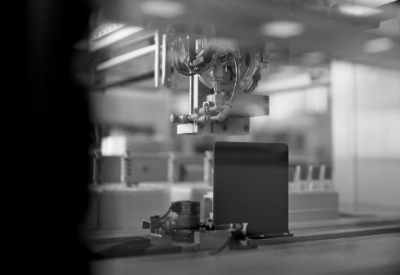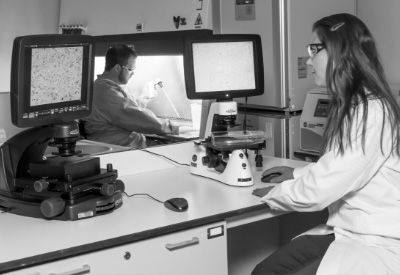
Many batteries give off heat or use thermo-electric conversion to generate a current. As a result, energy particles moving faster or slower can impact the performance of power cells. Different coatings and barriers have been used to try and protect batteries from the effects of external temperature, but prolonged exposure to heat or cold still causes a problem for many modern devices.
City Labs has developed betavoltaic power sources that perform within a larger temperature range than other batteries. In addition, prolonged exposure to harsh temperatures does not have a permanent effect on their performance.
How Different Types of Batteries Respond to Temperature Changes
When designing electronic devices for harsh environments, you want to choose the best battery possible. Your primary power source should be predictable, reliable, and capable of handling extreme temperatures.
When comparing how electrochemical batteries and betavoltaic batteries respond to high and low temperatures, it becomes clear that betavoltaic cells are the safer option.
Electrochemical Batteries
Traditional batteries use chemical reactions to generate electricity. Lithium-ion batteries, for example, are very popular in today’s society. They generate electricity by sending lithium ions from a positive electrode to a negative electrode through electrolytes. The potential difference between electrodes forms a charge.
The speed at which lithium ions travel through electrolytes is proportional to external temperatures. Extremely cold temperatures will cause ions to move slower, decreasing the capacity of batteries. The charge transfer velocity will also decrease, making it difficult to charge a lithium-ion battery below 0 degrees Celsius. Charging batteries below freezing can cause irreversible damage to them.
Lithium-ion batteries are also at risk in high-temperature environments. A lithium-ion battery may overheat in temperatures upwards of 60 degrees Celsius. Even in cool environments, lithium-ion batteries can get too hot if the current gets too high. When a battery overheats, it can sustain permanent damage that results in a loss of power and faster degradation.
Betavoltaic Power Sources
While betavoltaics is still a very young technology, it has made much progress in the plight of temperature resistance. Previous studies have found that “…commercially available betavoltaics can operate in excess of 10 years over temperatures ranging from -55 degrees Celsius to 150 degrees Celsius” (Olsen, Cabauy, & Elkind 2012). There is an inverse relationship between betavoltaic battery performance and temperature as these cells generate a higher current at lower temperatures.
Furthermore, when extreme temperatures affect betavoltaic power cells, it does not cause permanent damage. Once the temperature returns to normal, the battery will display steady and predictable characteristics as though it was never exposed to harsh conditions.
As this technology continues developing, betavoltaic power sources will be more and more popular in low-power devices built for extreme temperatures.
NanoTritium™ Batteries for Extreme Temperatures
City Labs’ NanoTritium™ Batteries harness beta-decay from the radioisotope tritium to generate a predictable charge for more than 20 years. As the betavoltaic decay is a natural and predictable property, it will continue through extreme temperatures.
Betavoltaics operate independently from secondary batteries. However, if a power burst is desired, then a secondary battery that has been trickle charged by a betavoltaic may be used. As these are often electrochemical cells, the applications of betavoltaic power sources are still limited to what their traditional counterparts are capable of.
Additionally, a betavoltaic can also trickle charge an electric capacitor. Many capacitors have wide operating temperatures that are much greater than electrolytic batteries.
How Does Temperature Affect Battery Life?
Batteries do not always sustain permanent damage from extreme temperatures. Sometimes it will affect their current for a temporary period, and then they will return to normal. However, if the battery does sustain permanent damage, its battery life could be significantly reduced.
Whether the heat causes an overflow of ions which accelerates the aging process or cold weather condenses the battery, extremes are typically not good for a battery’s lifespan.
Do Batteries Work Better in Hot or Cold Environments?
The answer to this question is complicated because there are multiple factors to consider. In cold temperatures, chemical reactions within the batteries will slow down, and electrolytes may even freeze completely. Batteries are more efficient at high temperatures than low temperatures.
However, high internal temperatures are often a sign of poor battery health and pose a much higher risk to the operational capacity. If a battery overheats, it can damage itself. And in some cases, electrochemical batteries may even experience thermal runaway. When the battery is producing more heat than it can dissipate, it will destroy the battery cell and cause gasses or acid to release.
In general lithium batteries will not degrade or cease to function above 80º C. Batteries can operate warm, but if they go above their intended use range they can be severely damaged or stop functioning.
What Is a Good Battery Temperature?
Different types of batteries operate at different ambient temperatures. A battery running too hot or too cold is indicative of poor manufacturing or a lack of capability. Important power sources are constantly monitored to ensure that there are no issues. Good batteries remain between the temperature limits even when charging and loading.
Battery Temperature Limits
Lithium-ion battery temperature limits fall roughly between 0-60º C. Betavoltaic batteries have been successfully tested between -55 and 150º C, and we still anticipate that they will work in colder and hotter temperatures.
Battery temperature should be constantly monitored to ensure it stays between the allowed limits. Some batteries are specifically designed for colder or hotter weather, so the limits may be subject to change.
Check Out City Labs’ Products
In 2008, City Labs constructed its first betavoltaic power sources in the form of P100 Series NanoTritium™ Batteries. A number of City Labs’ partners are still using them today. Since then, we have continued to develop our P200 Series, which has a higher capacity and more versatility than the first line.
In an ever-changing industry, it helps to have a battery manufacturer that’s on your side. We are always looking for mutually beneficial scientific or commercial partnerships, even if that means we need to make some adjustments to our technology.
Reference
Olsen, Larry C., Cabauy, Peter, and Elkind, Bret J., “Betavoltaic power sources,” Physics Today, Vol. (65) No. (12) (2012): pp.35-38.
The Nuclear Battery Company With a Vision
Ready to power your next innovation or learn more about our technology?
Contact Us Today




